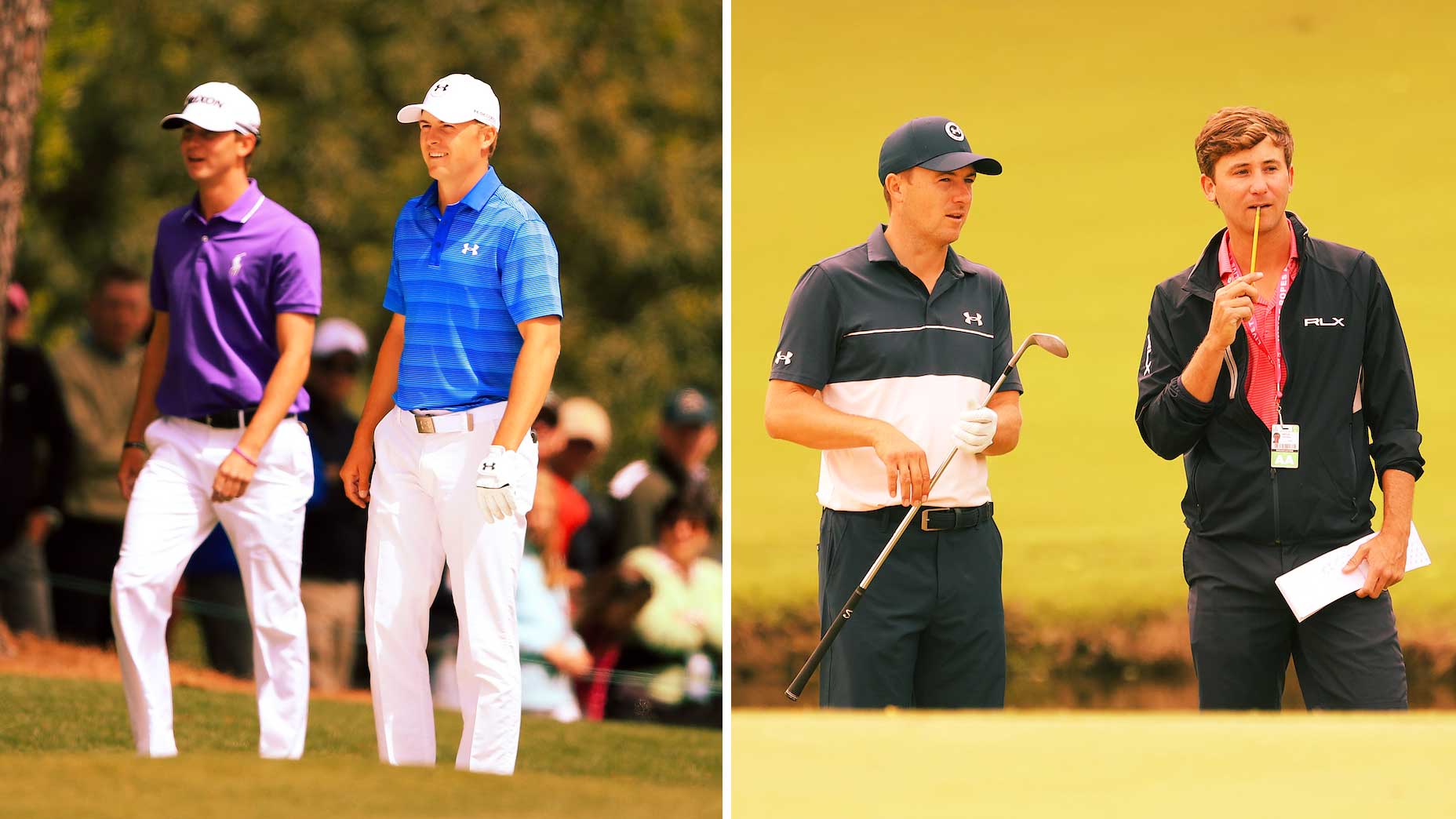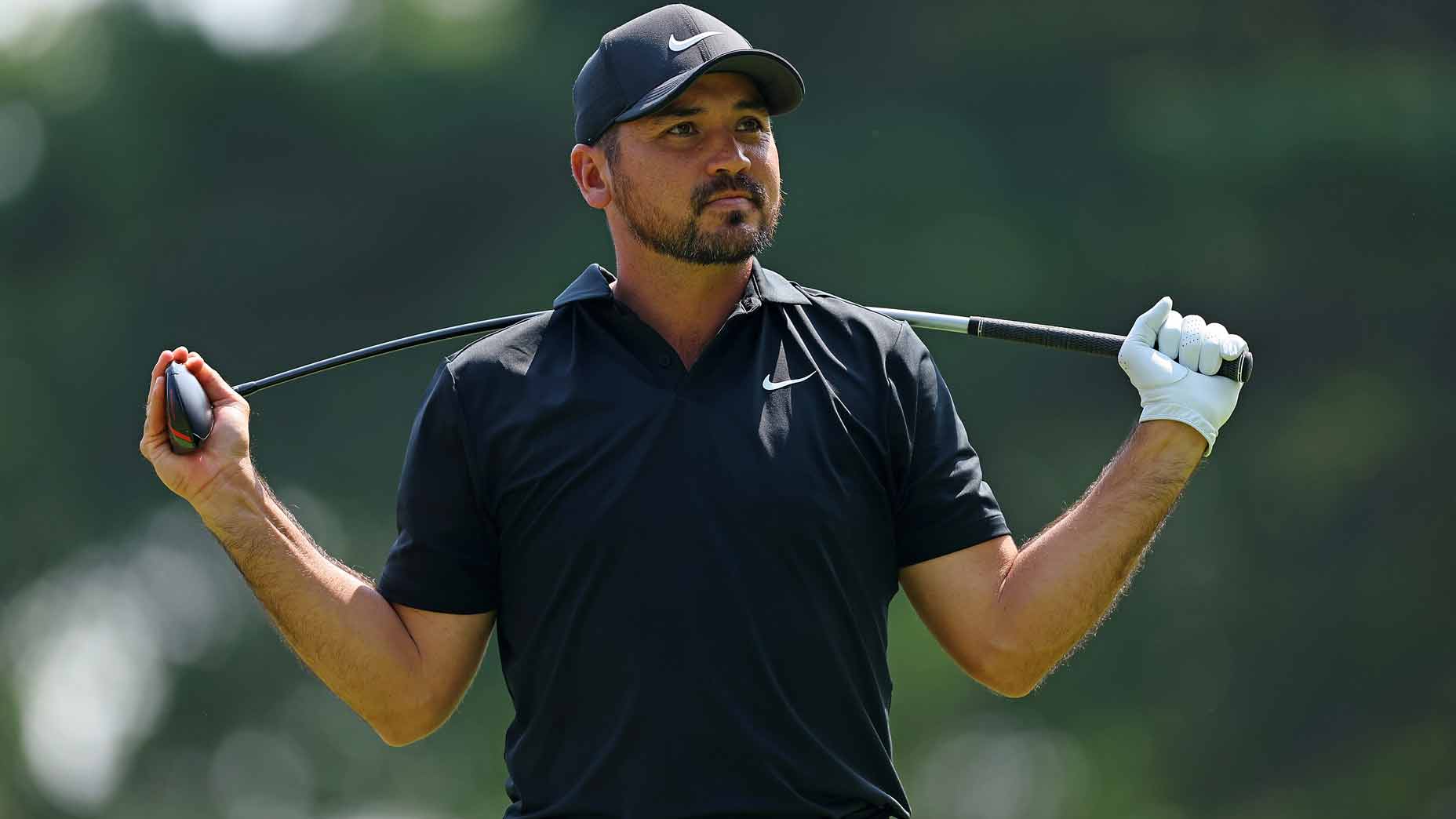Jason Day was late.
Just a few minutes late, of course. And he had a good reason.
“The Big Cat was in there, so I had to wait it out,” he said as he sat down, chuckling.
It was just after 9 a.m. in the locker room at the Cape Club of Palm City when Day took his seat. The Big Cat in question was, of course, Tiger Woods, a fellow attendee of the day’s Bridgestone Golf photoshoot. And his deference to the man in red and black was a reminder that there are some golfers still ahead of Day in the pecking order.
But there aren’t many.
We have short memories — in sports, in society, in media, in general — so it’s easy to forget that we’re just a few years removed from Day being a fixture atop the professional game. He was inside the top 10 as recently as 2019. A few years before that, from 2015 into 2016, he put together one of the most incredible stretches of PGA Tour play in recent history, winning the PGA Championship and the Match Play and the Players plus four other tournaments over the course of 15 starts.
“There’s a lot of guys on Tour that are happy to be 70th on FedEx,” he said, reflecting. “That’s well-documented. You’re earning a very, very good living. It’s very easy. You’re not much in the spotlight. You’re getting a decent chunk of change outside of golf from sponsors and stuff.”
But not Day.
“Being No. 1 in the world is a lifestyle choice. You have to wake up every single day and go, I have to do this every single day. I have to be disciplined in my body, in my nutrition, in my mental side. You have to dedicate and give yourself to that. And certain things around you have to sacrifice for that.”
What’s incredible is that a decade before that, Day was lost. He was a rebellious teenager, struggling to cope with the loss of his father, struggling to make sense of the relationship they’d had. He was drinking and fighting. He was going anywhere but World No. 1.
“I started going down a pretty rough road,” he said. His father died. One sister ran away from home. His eldest sister did what she could to keep the family together, but it was a challenge. “I was starting to go down this road of drinking, getting in fights at school. And that was just not what my mom wanted me to go down.”
So how’d he course-correct? What happened that brought Day from his humble Queensland beginnings to the top rungs of the game? And once he plummeted from those heights all the way to No. 175, how’d he summon the will to battle his way back?
I wanted to tap into Day’s memory and to take him out of the day-to-day process of obsessive improvement to better understand his journey. Simply put: Why him?
Day hasn’t yet completed the journey back to World No. 1. But as of this week he’s back inside the top 20. That’s a hell of a long way to come.
This is the first episode of Breakthrough, a series where we sit down with golf’s most interesting people about the most pivotal moments of their golfing lives. I hope you take some time to watch the full conversation, which you’ll find in the video at the top of this page.
As for Day? He’s still climbing. One moment from the conversation struck me, near the end, when he described talking to a buddy who’s just beginning a swing overhaul.
“He’s just starting this journey too and I’m two years into it and I’m like, dude, this is going to be the greatest journey of your life,” Day said wistfully. “You’re going to absolutely love it. I was actually jealous, a little bit. Because when I started my swing changes it was complete heartache all the time. Because I was like, why can’t I just get it in this position? And I look at it from the time that I started to the timeline of it…I have jumped headfirst into this rabbithole. It’s really, really exciting.”
Dylan welcomes your comments at dylan_dethier@golf.com.








